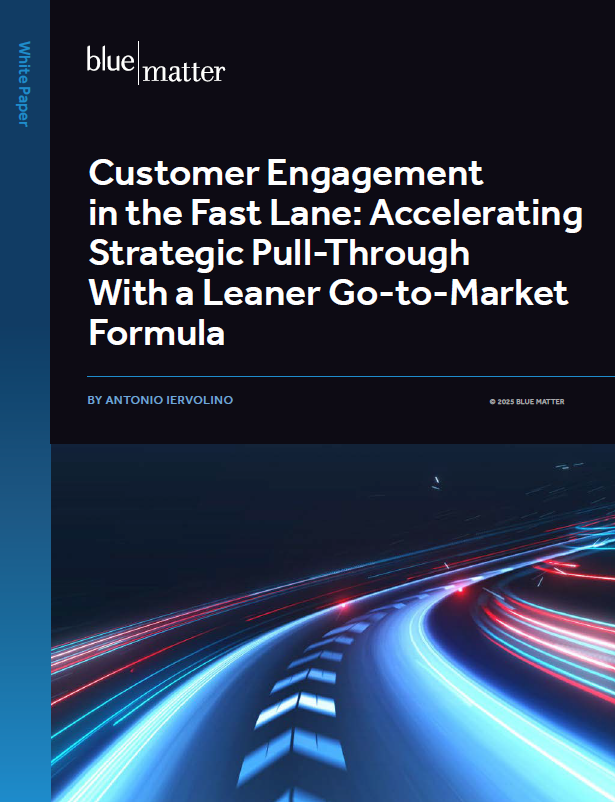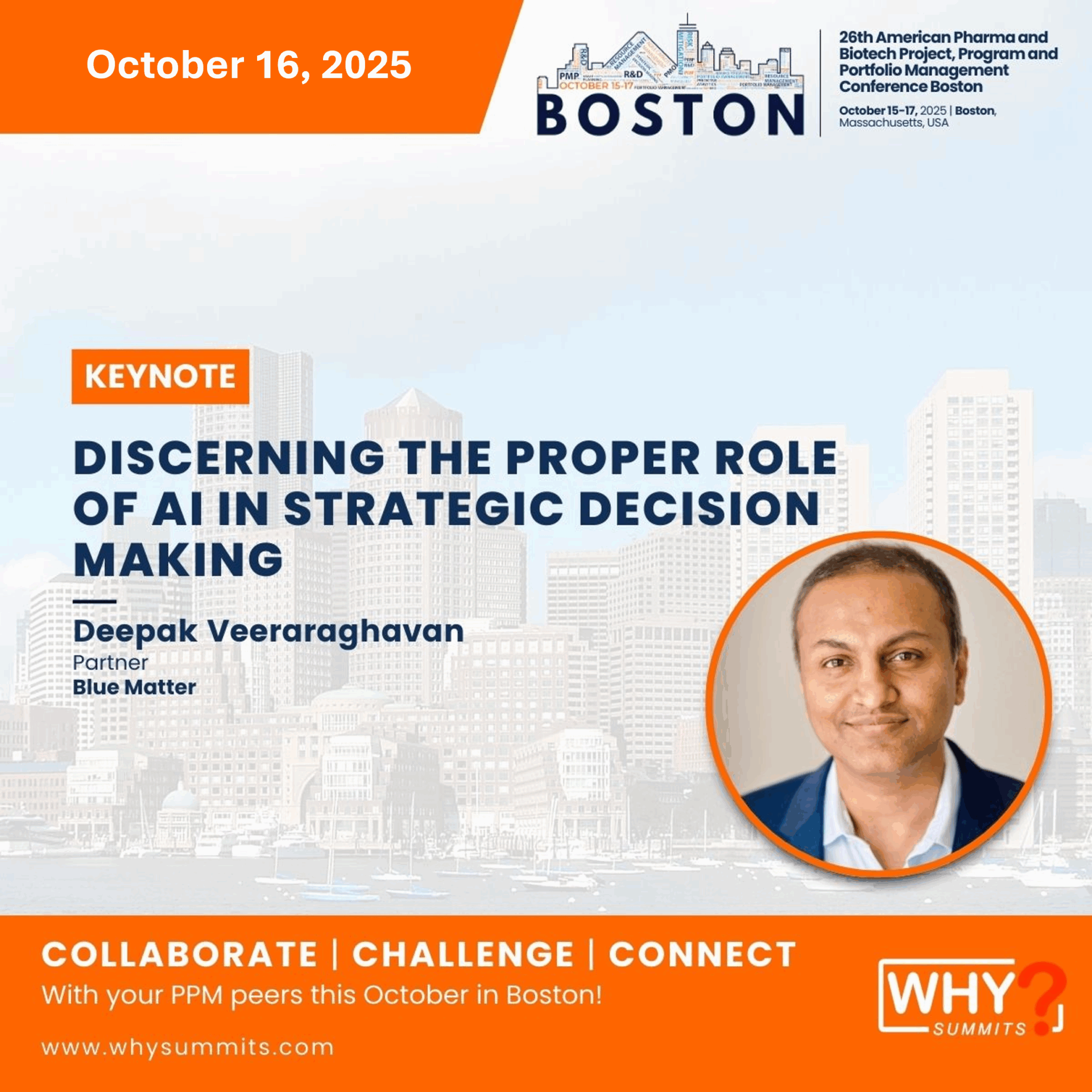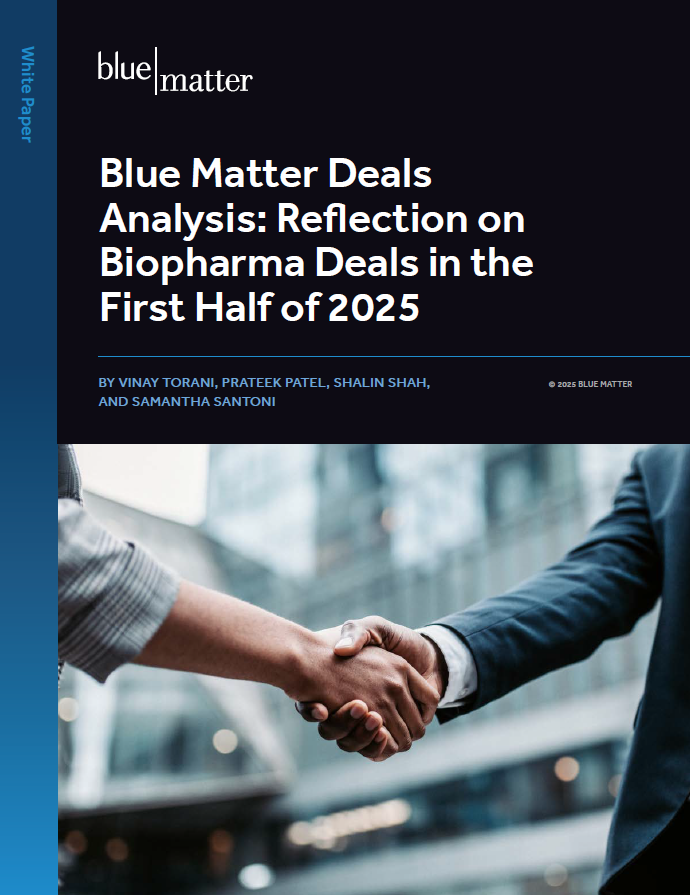
In part I of this series, we identified several trends that are driving big changes for the medical affairs function within biopharma companies. On the whole, those trends are making the function more strategically important while simultaneously making its job more complex. In this installment, we explore one of Medical Affairs’ most important responsibilities: insight generation.
We’ll tackle a range of important questions: What are insights? Why are they important in medical affairs? How are Medical Affairs’ responsibilities changing regarding insight generation? What should medical affairs teams do to be optimally effective in today’s environment?
What are insights and why are they important?
Definition
Before exploring Medical Affairs’ role as an insight generator, it would be helpful to define insights and align on why insights are important to a biopharmaceutical company. Oxford Languages defines insight as “a deep understanding of a person or thing.” That definition is fine as far as it goes, but it’s only useful to a point. Taking it one step further, we can say that an insight is a deep understanding that you can use to inform a strategy. In short: you can actually do something with it!
This sets insights apart from simple data or facts (though data and facts inform insights). Consider this example: Treatment X can be administered at any time after the onset of symptoms. We have data telling us that some physicians choose, at times, to delay administering the therapy. That’s a fact (not an insight). We also have data showing that different patients have varying responses to the therapy. That’s another fact. However, our customers share that patients receiving the therapy within 5 days of the onset of symptoms have exhibited the best response. Based on that, we decide to generate additional evidence to build confidence amongst physicians to administer the therapy within the 5-day window to maximize treatment effect. That deep understanding of the data resulted in an actionable Eureka! moment, and that constitutes an insight.
Importance
Medical Affairs is becoming a critical nexus of knowledge for a cross-functional range of internal partners, as well as a trusted source for external stakeholders. As such, it’s filling an increasingly important role in gathering (or generating) insights, communicating those insights, and leveraging them to aid in decision-making. Such insights can help do the following, among other things:
- Uncover unmet needs in the marketplace
- Clarify customer preferences and the motivations behind them
- Shape clinical development plans, evidence generation plans, and other strategies
- Support regulatory submissions
With the vast amount of information that is available today, Medical Affairs will need to continuously enhance its ability to find and analyze data—and derive insights from it—at scale and at a pace that matches the needs of clinical practice.
How are Medical Affairs’ responsibilities changing?
Historically, Medical Affairs has gathered information and insights from attending medical conferences, reviewing literature, partnering with researchers through investigator initiated studies, convening advisory boards with key opinion leaders (KOLs), and via field-based medical science liaisons (MSLs) who engage with healthcare providers (HCPs). KOL input is often used to get feedback on clinical trial designs and get early reads on the data emerging from trials. MSLs often communicate information to HCPs, however, they also capture feedback from them. MSLs have historically captured that feedback by asking specific questions, rather than engaging in more open-ended listening.
All of the things mentioned above are still happening. However, the universe within which Medical Affairs operates is becoming more complex, and so is Medical Affairs’ role. For example, Medical Affairs must
- Work with an increasingly complex array of data sources, including real world evidence (RWE), health economics and outcomes research (HEOR), market access data, phase IIIb/IV data, social media, and more. Synthesizing relevant information from all these sources to derive insights is becoming more difficult.
- Engage with a growing ecosystem of external stakeholders, which is expanding far beyond HCPs and KOLs to include patients, advocacy organizations, payers, and others. As a trusted partner for each stakeholder group, Medical Affairs must be able to generate and tailor useful insights to each.
- Engage with an expanding collection of internal functions. Commercial functions, for example, have long interacted across numerous functional areas within the biopharma enterprise. Medical Affairs has worked cross-functionally, too, but not to the same extent. Now, given its expertise and access to a vast range of data sources, it’s centrally positioned. It’s a hub with which many other functions must engage as they develop strategies and make decisions.
- Become more patient-centric. With the general trend toward increased patient-centricity, Medical Affairs must do all the things mentioned above with an eye toward meeting patient needs, addressing patient “pain points”, enhancing patient care, and improving outcomes.
Below, we explore a few things medical affairs teams should consider as they adapt to this increasingly complex environment.
What can Medical Affairs do to adapt?
Defining Insights and Providing Better Guidance Regarding Them
First, Medical Affairs needs to ensure that its own team members understand what insights are and why they are important. This manifests in two ways: 1.) Team members must understand the definition of insights in a general sense, and how they differ from facts or data and 2.) They will need guidance on the specific types of insights that might be valuable to the company. Different companies operating in different therapeutic areas and with varying objectives might value different types of insights. In addition, team members need clear guidelines on how to consistently gather effective insights.
This guidance should also explore the key sources of potential insights. Even today, many medical affairs teams fail to mine all the potentially valuable sources. For example, a recent MAPS survey indicated that only 26% of teams systematically collect insights from scientific literature and only 26% collect insights from social media (which we’ll discuss below). Furthermore, only 21% utilize a specific repository for collecting and organizing insights.
Building a Dedicated Insights Function
As Medical Affairs fulfills a more central role in capturing, consolidating and disseminating insights, it might want to consider following a more holistic model for doing so. This may require creating a dedicated insights function within Medical Affairs.
A dedicated function could focus its resources on the crucial task of insight generation. Plus, it would be better positioned to develop best practices, create specialized tools, and build in-depth expertise. In fact, Bristol Myers Squibb has already created a Global Medical Insights function, as has Astellas. Furthermore, some companies have started to develop “integrated insights generation plans” as a key strategic deliverable.
Equipping MSLs to Engage in Curiosity-Driven Scientific Dialogue
As we mentioned above, MSLs have historically been a conduit through which scientific information was communicated to HCPs. In addition, they collected information from HCPs, but they typically did so by asking questions about specifically identified topics. As a result, MSLs would likely miss collecting important bits of information because they never asked about them. After all, you only get answers to the questions you are asking, and you might miss important needs, challenges, or opinions. You don’t know what you don’t know, so there can be great value in getting HCPs to talk more, then listening, following their lead, and digging deeper.
Moving forward, it will be increasingly important to train MSLs to engage in a scientific dialogue with HCPs, asking more open-ended questions that can result in surprising and unforeseen—but useful—information. For example, asking an HCP to tell about their most challenging patient experience over the past 3 months could provide some enlightening information that would otherwise remain buried.
Related to this, training can be designed to make curiosity a “skill” for MSLs, enabling them to more effectively structure and ask “Why” questions more often than “What” questions. “Why” questions tend to encourage HCPs–and others–to open up and are more likely to lead to new insights.
Medical Affairs leaders will need to work with internal Learning and Development teams to determine which capabilities will be most critical for key roles within their organizations. Then, they’ll need to collaborate to design training focused on building those capabilities. Chief among them will be creating dialogue, questioning, listening, and generating insights.
Intentional Listening with Assistance from New Technologies
Better listening should not just be limited to the MSL field force. In fact, the entire function will need to be more intentional about listening to the marketplace, including HCPs and (especially) patients. Development of a true listening strategy should be a priority for any medical affairs function.
Some biopharma companies are using new technologies to generate insights from sources that were previously untapped (or were tapped in a very limited sense). For example, some engage in social listening, proactively monitoring online forums and social media to better understand the patient journey and identify patient issues and struggles along the way. Others are experimenting with natural language processing (NLP) to gather insights from unstructured data, such as electronic medical record (EMR) notes. By doing this, they can potentially generate insights that could lead to better patient support programs or otherwise improve patient care.
As mentioned previously, only 26% of medical affairs teams monitor social media for potential insights. As the ecosystem continues to evolve, that percentage will climb dramatically. Medical affairs teams will need to get very good at listening and become highly adept at using new technologies to enable that. This type of listening cannot be done “off the side of someone’s desk” within Medical Affairs. It will require dedicated resources and specialized expertise within the team.
Integration
Integration should be a key focus of Medical Affairs moving forward. In this context, we use the term integration quite broadly and it relates to a range of things. For example, medical affairs teams must develop better processes and best practices to
- Integrate cross-functional insights and global or regional insights into its repository
- Integrate inputs from a wide range of sources into its insight generation “engine”
- Integrate its efforts with other functions, as it plays an increasingly important bridging role between R&D and commercial teams
- Integrate its insights and guidance earlier into the development cycle, as Medical Affairs should help lead the charge in clinical development planning and even early commercial planning
Developing New Metrics
New metrics will also be needed. After all, Medical Affairs will be expending more resources on insight generation, and it’s good business practice to make sure there’s a positive return on those investments. But how do you measure the ROI of insights? As of now, there are no clear answers to that question, but those answers will need to be uncovered.
What we do know is this: there is a need to better define the value and impact of medical affairs insights at the local, regional and global levels. Clearly defined metrics can help ensure that insights ultimately result in better strategies, which in turn drive improved patient care.
Some concepts that have been suggested include measuring the increase in knowledge and/or calculating a “share of scientific voice” that quantifies how a scientific message resonates across a scientific community over time. Others have raised the possibility of measuring the percentage of time the HCP talks vs. the MSL during each visit (with a goal of increasing the time during which the HCP is talking). Yet another idea involves measuring the number of What questions vs. Why questions asked by the MSLs.
The point is, there is no one-size-fits-all solution and individual biopharma companies will need to experiment to determine what metrics will be most relevant to their objectives. Over time, the distributed efforts of many companies will result in a standard slate of metrics for the industry to leverage.
Up Next
In our next installment, we’ll explore how the changing ecosystem is affecting another critical role for Medical Affairs: Evidence Generation.







